Thank you! Your submission has been received!
Oops! Something went wrong while submitting the form.

Copyright © 2023 Premier Hair Solutions
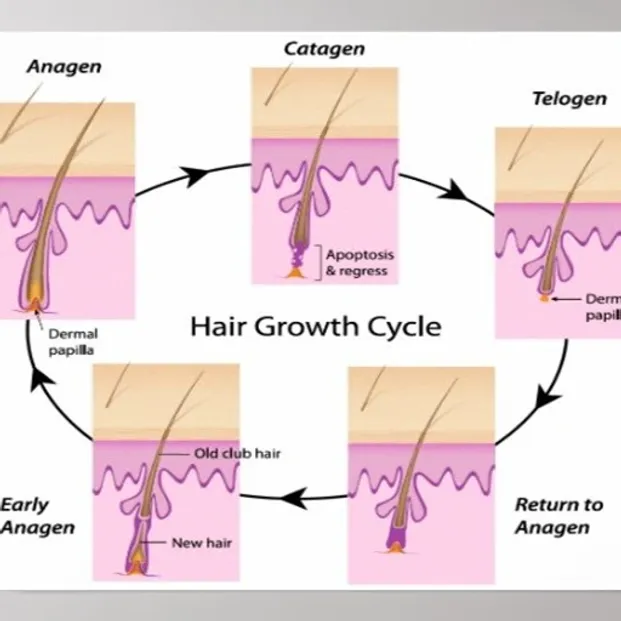
The cycle of hair growth and loss seems like a simple process, but it is surprisingly complex and is composed of four distinct phases. These stages of hair growth have been extensively researched to better understand how hair grows and what might be done to prevent or treat premature hair loss.The first three phases — anagen, catagen, and telogen — cover the growth and maturation of hair and the activity of the hair follicles that produce individual hairs. During the final, or exogen, phase, “old” hair sheds, though usually, a new hair is getting ready to take its place. Each phase has its own timeline, which can be affected by age, nutrition, and overall health. Fortunately, there are multiple options to intervene along the way to help ensure that your hair follows a healthy growth cycle.

The stages of hair growth begin with the Anagen phase. This is the longest phase, lasting about 3 to 5 years for the hairs on your head, though for some people a single hair could continue growing for 7 or more years. Average growth rate is 1 – 1.25cm per 28 days.Fortunately, the anagen phase differs with different types of hair. For example, the anagen phase for eyebrow hairs and pubic hairs is much shorter than the phase for your scalp hairs.During the anagen phase, your hair follicles are growing and adding keratin to their hair shafts that will continue to grow until they’re cut or until they reach the end of their lifespan and fall out. At any time, 80-90% of the hairs on your head are in the anagen phase.
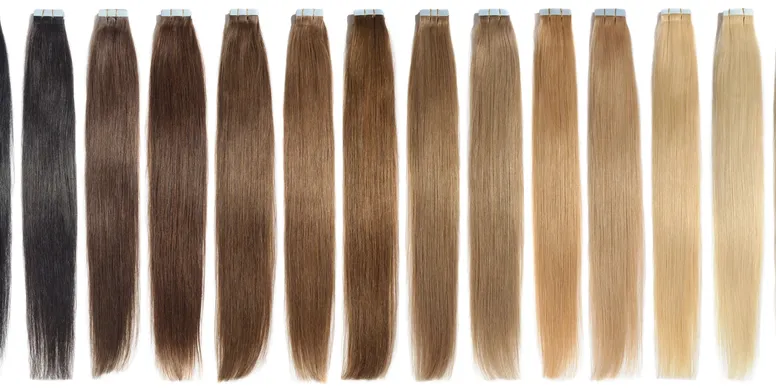
The Catagen phase starts when the anagen phase ends and tends to last about 10 days or so. During this phase, the hair follicles shrink, and hair growth slows. The hair also separates from the bottom of the hair follicle yet remains in place during its final days of growing.Only about 5 percent of the hairs on your head are in the catagen phase at any given time.
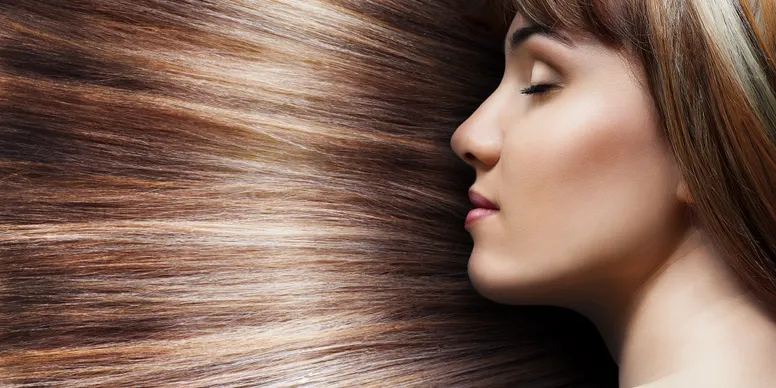
The Telogen phase typically lasts around 3 months. An estimated 10 to 15% of your scalp hairs are in this phase.Hairs don’t grow during the telogen phase, but they don’t usually fall out either. The telogen phase is also when new hairs start to form in follicles that have just released hairs during the catagen phase.

The Exogen phase is essentially an extension or a part of the telogen stage of hair growth. During the exogen phase, the hair shaft is shed from the scalp, often helped along by washing and brushing. Losing 50 to 100 hairs per day during the exogen phase is normal. During the exogen phase, which can last about 2 to 5 months, new hairs are growing in the follicles as old hairs fall away.
Each hair follicular unit has a pre-determined number of life cycles before it undergoes programmed cell death or apoptosis. Once this occurs, the follicle is dead and cannot be regenerated. Therefore, it is very important to slow down the speed at which the hair follicle goes through its natural life cycle to reduce the rate of hair loss. To do so, we must find and treat the underlying cause. The cause for male patterned hair loss is usually due to DHT. Female patterned hair loss can also be related to DHT but can also have multiple other causes and factors which affect hair loss.
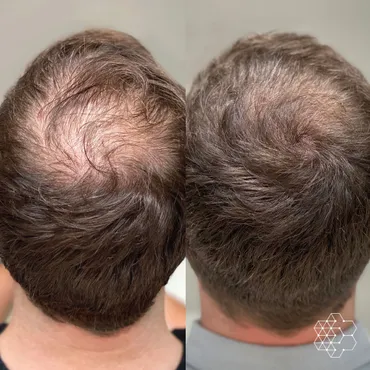
Androgenic Alopecia is typically due to the effects of Dihydrotestosterone (DHT) on the hair follicles and can affect both men and women. Androgenic Alopecia is much more common in men and can be very aggressive at an earlier age in patients with strong genetic sensitivity to DHT. Women are less commonly affected and typically begin later in life in their 40-50s. The genetic susceptibility is multifactorial and can be due to genes passed on from both parents. The genetic susceptibility of the hair follicles to DHT leads to an acceleration of the normal life cycle of the hair follicle leading to a progressive decrease in hair caliber, hair density, and progressive baldness until ultimately the hair follicle is destroyed.
Currently, there is no cure for Androgenic Alopecia. However, there are numerous medical and non-surgical options to slow down the progression of hair loss, boost hair thickness and length, and if necessary, surgical options for hair transplantation to create a natural-appearing hairstyle.
There are many causes of hair thinning and hair loss, particularly in women, including nutritional and dietary deficiencies, hormonal changes, telogen effluvium, and autoimmune disorders.
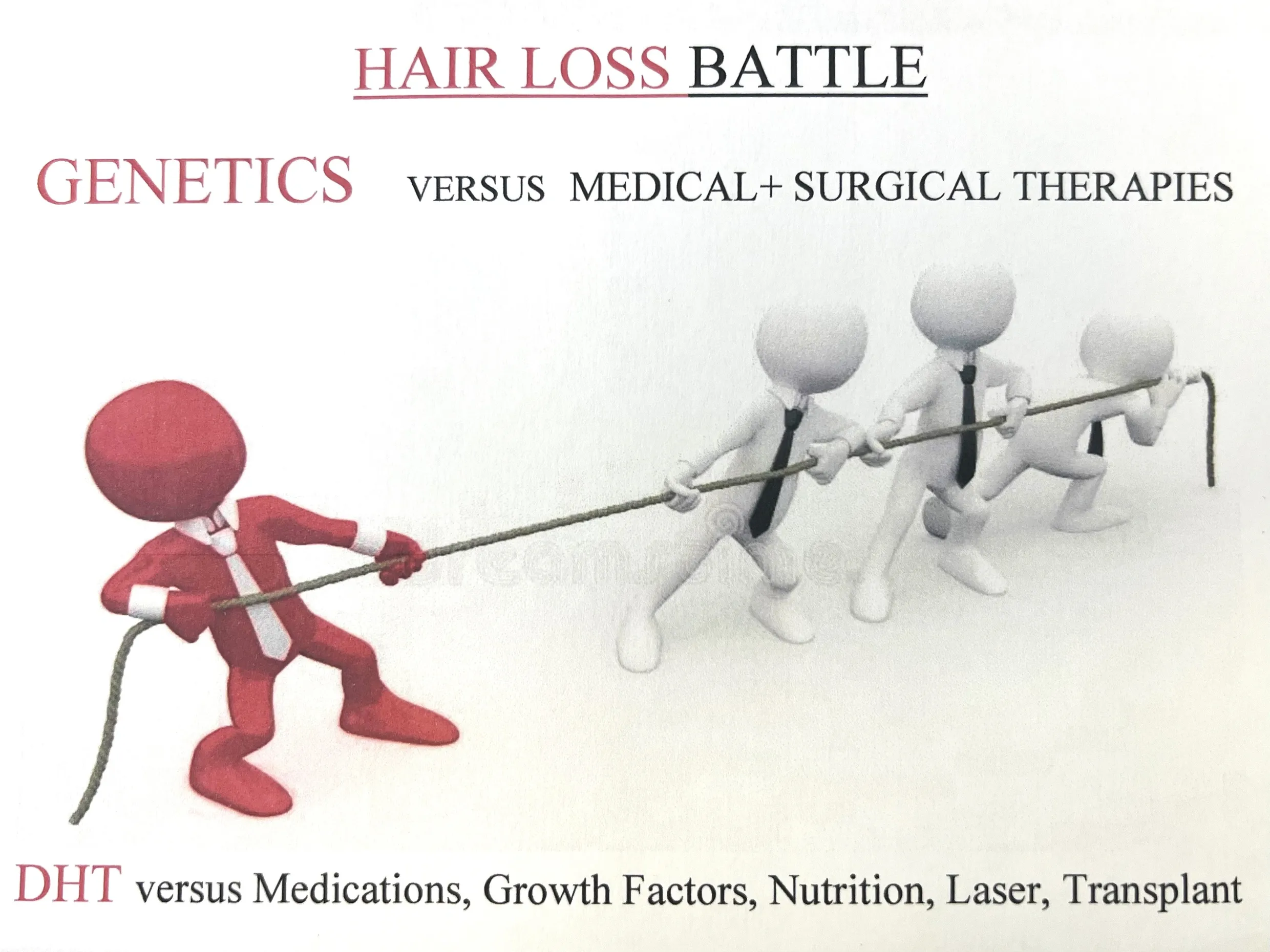
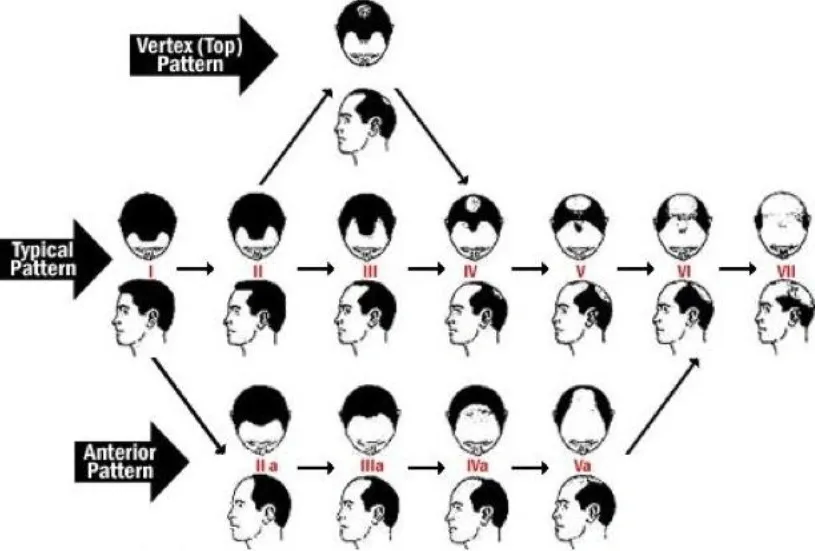
Medications:
Using a gardening analogy, DHT is like a poison that kills your plants. There are multiple treatment options to reduce the effects of DHT. These are divided into medications that reduce DHT levels via inhibiting the conversion of Testosterone to DHT (Finasteride and Dutasteride). This class of medications targets the Alpha 5-reductase enzymes (class I and II).
Finasteride/Dutasteride:
Finasteride is currently FDA-approved for the treatment of male patterned hair loss and prostate enlargement. Dutasteride is currently FDA-approved for prostate enlargement, but it is approved in many other countries for hair loss. These medications have been studied extensively and have been used for many decades. There has been a lot of media attention regarding the incidence of sexual side effects that are possible with these medications, including a rare condition called post-finasteride syndrome where the sexual side effects are present long-term. This has led to many patients not willing to try these medications, especially younger men. Also, these medications are not indicated for women of child-bearing age.
childbearing
Minoxidil:
We also have medications that act like fertilizers to stimulate hair growth like Minoxidil. Minoxidil is used primarily as blood pressure medication that for some unknown mechanism triggers hair growth. Minoxidil has been FDA approved as a topical treatment for both male and female patterned hair loss as Rogaine. Different formulations and strengths are used for men and women. Unfortunately, approximately 1/3 of patients lack an enzyme in the scalp that is required to convert minoxidil into its active form. Therefore, 1/3 of people will not respond to topical minoxidil. More recently, there has been increasing use of oral Minoxidil at very low doses with very promising results and relatively low incidence of side effects.
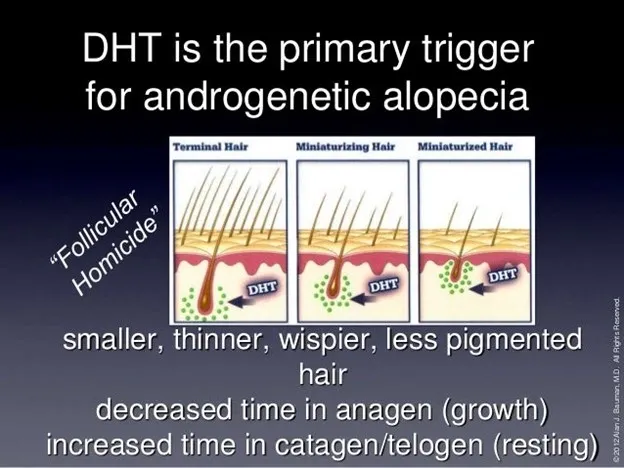
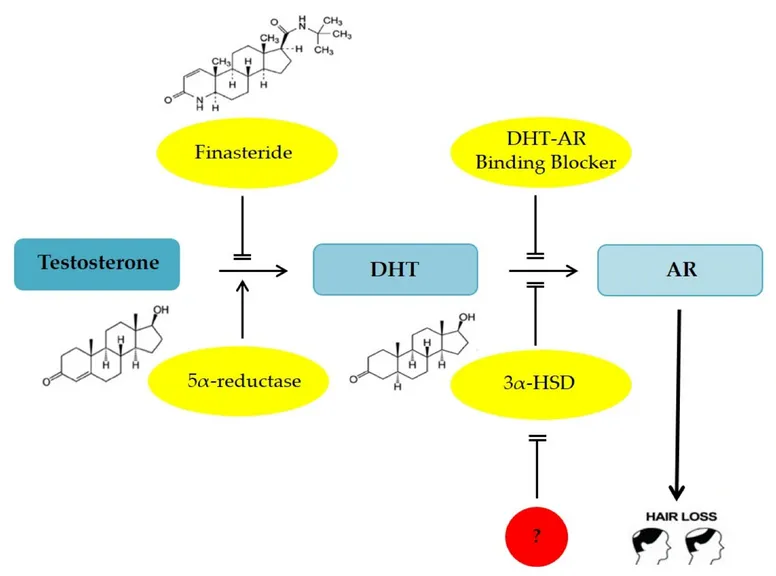
Surgical Treatments (FUE/FUT/LSE):
The surgical treatments for male and female pattern hair loss have significantly advanced over time, offering excellent short- and long-term results when the most suitable method is applied to the right individual. The two procedures are the Linear Strip Excision (LSE), also known as Follicular Unit Transplantation (FUT), and Follicular Unit Extraction (FUE). Dr. Fernandez-Tatum will thoroughly discuss both techniques during the consultation, outlining the advantages and disadvantages of each, and explaining the reasons behind selecting the most appropriate technique for each individual.

Linear Strip Excision (LSE) and Follicular Unit Transplantation Procedure (FUT):
The Linear Strip Excision (LSE) or Follicular UnitTransplantation Procedure (FUT) is carried out with moderate sedation an
d local anesthesia. Follicular grafts are usually extracted from the back and sides of the head in the Safe Donor Area. The patient is positioned face down on the procedure table and given sedation through oral and IV medications. The donor scalp is numbed with local anesthesia, and a strip containing the Follicular Units (FU) is surgically removed by Dr. Fernandez-Tatum. Care is taken to preserve blood vessels and nerves. The scalp is sutured without tension, leaving a discreet linear scar that is typically hidden by hair. Sutures are removed 2-3 weeks later. The strip is dissected into individual Follicular units, grouped based on hair count, and stored in a special solution. The patient is then seated, and the recipient scalp is anesthetized for the transplantation process. Grafts are meticulously placed to achieve a natural look. The procedure duration varies depending on the number of grafts needed. Patients are kept comfortable with sedation and can relax during the procedure. Meals are provided during the process.
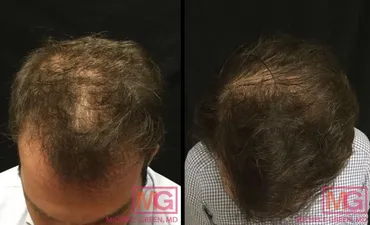

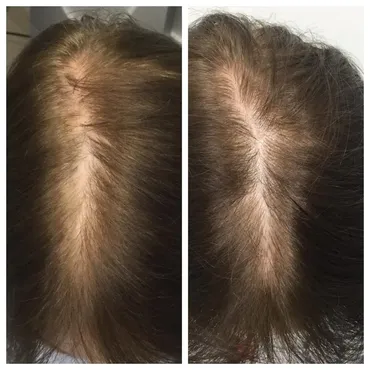
Follicular Unit Extraction (FUE) Procedure Overview:
Follicular Unit Extraction, or FUE, is performed with local anesthesia and moderate sedation. Donor grafts are usually sourced from the back and sides of the head, known as the Safe Donor Area. In some cases, beard hair can be used if scalp donor hair is insufficient. The donor area is numbed before using a handheld punch device to extract individual follicular units. Each unit contains 1-4 hair strands with the entire follicle and root system intact. Grafts are stored in a solution with nutrients for preservation and inspected for quality under a stereomicroscope. After harvesting a safe number of grafts, they are transplanted into recipient areas on the scalp to achieve a natural look. The procedure lasts 2-8 hours based on the required grafts. Over-harvesting should be avoided to prevent cosmetic issues. FUE results in less noticeable scarring compared to Linear Strip Excision (LSE) or FUT methods. Post-transplant, the scalp may be red, swollen, and tender for a few days. Patients should avoid touching the scalp to prevent graft displacement. It takes about 7 days for the grafts to fully integrate. Scabs will form and naturally fall off as the scalp heals. Patients are advised to elevate their head while sleeping to reduce swelling. Recovery is typically quick, but caution is necessary for optimal results. Taking 2-3 days off work post-procedure is recommended for proper healing.
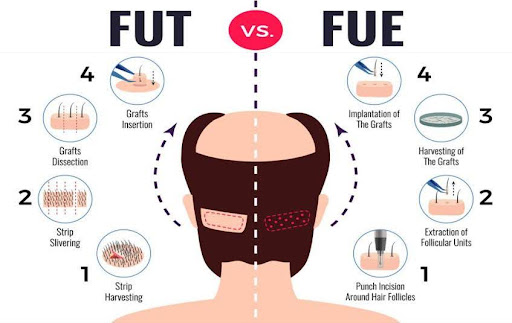
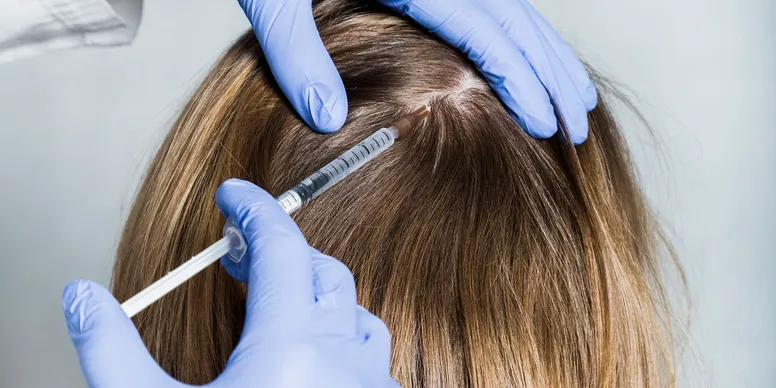
Advanced Hair Transplants (change to Medical and Non-Surgical Treatments):
Our Medical and Non-Surgical Hair Preservation solutions are crucial for any patient's treatment plan to reverse hair loss and protect hair follicles. These solutions encompass topical, injection, or oral medications, nutritional supplements, and Low-level laser treatments. Additionally, we provide a non-injectionalNew PRP treatment using the AquafirmeXS device and De/Rive plant-based serums. This treatment delivers exfoliation, hydration, nutrition, and growth factors directly to the scalp, revitalizing hair and promoting regrowth.
Platelet-rich plasma or PRP:
Platelet-rich plasma (PRP) has a long history of being utilized to promote hair growth by harnessing the patient's own stem cells and growth factors found in platelets. The process involves drawing blood from a vein, separating the platelet-rich plasma from blood cells using a centrifuge, and then reintroducing it into the scalp to stimulate hair follicles. Recent advancements have led to the exploration of bio-identical growth factors from various sources for the same purpose. Our clinic provides a non-invasive treatment option that involves plant-based serums and growth factors delivered using the Aquafirme XS device with De/Rive. This method enhances scalp exfoliation, boosts blood circulation to the hair follicles, and facilitates the transportation of growth factors through ultrasound and low-level laser therapy. Extensive research has been conducted on this device, and it has received approval from the FDA.
Low Level Laser Therapy:
Laser hair caps, also known as low-level laser treatment (LLLT) devices, are designed to prevent or reverse hair loss. They emit red light believed to stimulate hair growth by accelerating cell division and encouraging hair follicle stem cells to generate new strands. FDA-approved for both men and women with thinning hair, the exact mechanism of action is not fully understood. Light therapy is thought to possess anti-inflammatory properties that reduce damaged cells in the scalp, potentially preventing hair loss. Studies indicate laser caps can effectively treat male and female pattern hair loss, especially when other treatments have failed. However, they do not directly promote hair growth in advanced balding areas. The current recommendation is to use these devices three times a week for 20 minutes per session. Most brands suggest using them for 30 minutes daily for optimal results, claiming visible hair growth between 6 and 12 months. It's essential to highlight that these devices are generally safe with no known side effects. However, individual outcomes may vary, and effectiveness can be influenced by factors such as the stage of hair loss and adherence to the treatment plan. Various products are available online, and patients are encouraged to research each one to determine the most suitable option.
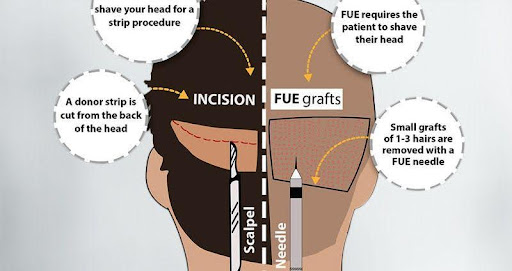

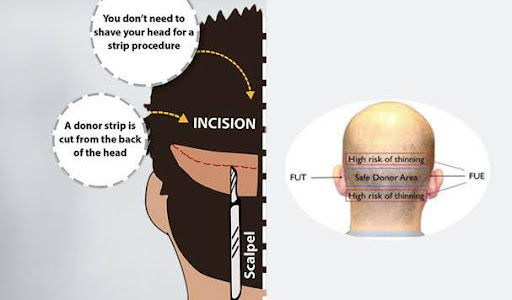
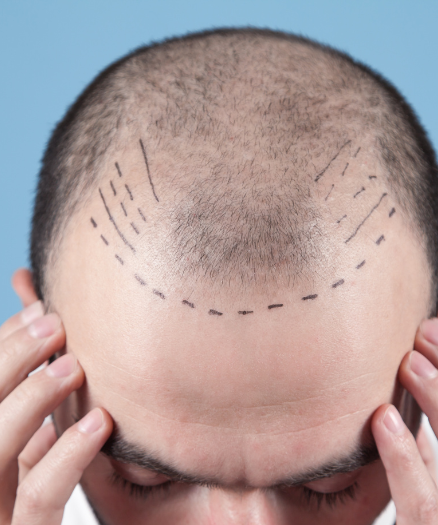
Choosing Premier Hair Solutions for your Hair Replacement needs reflects a wealth of experience and a dedication to personalized care. Dr. Alejandro Fernandez-Tatum, M.D., leads our team with over a decade of expertise in Vascular Surgery, now specializing in Hair Restoration. Dr. Fernandez-Tatum's precise surgical skills, honed through years of microscopic surgery, deliver accurate and natural-looking results in Hair Restoration. What distinguishes us is our commitment to tailored care, where each patient is seen as a unique individual embarking on a transformative journey.
